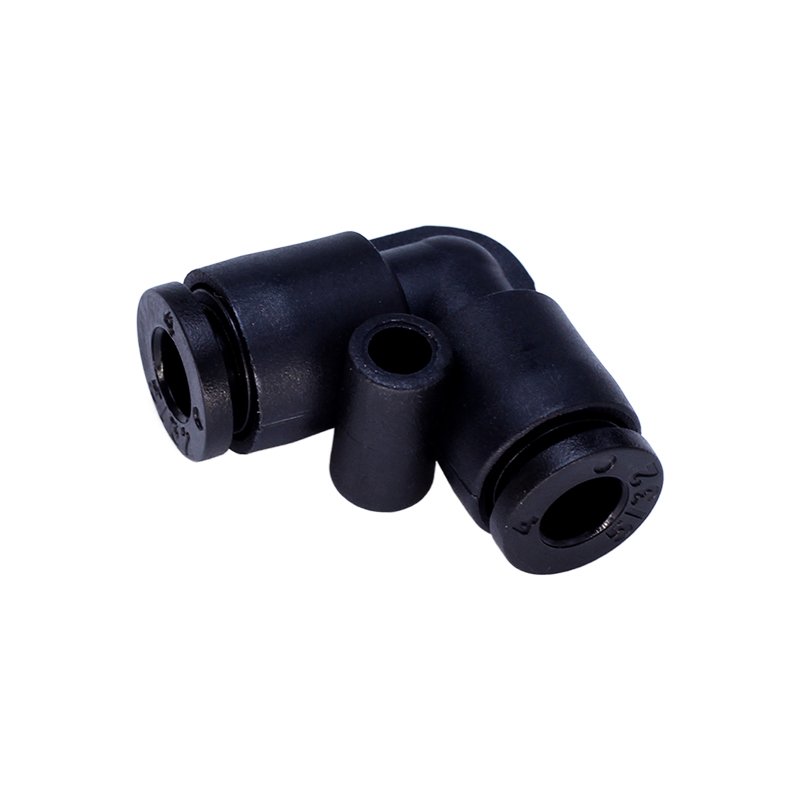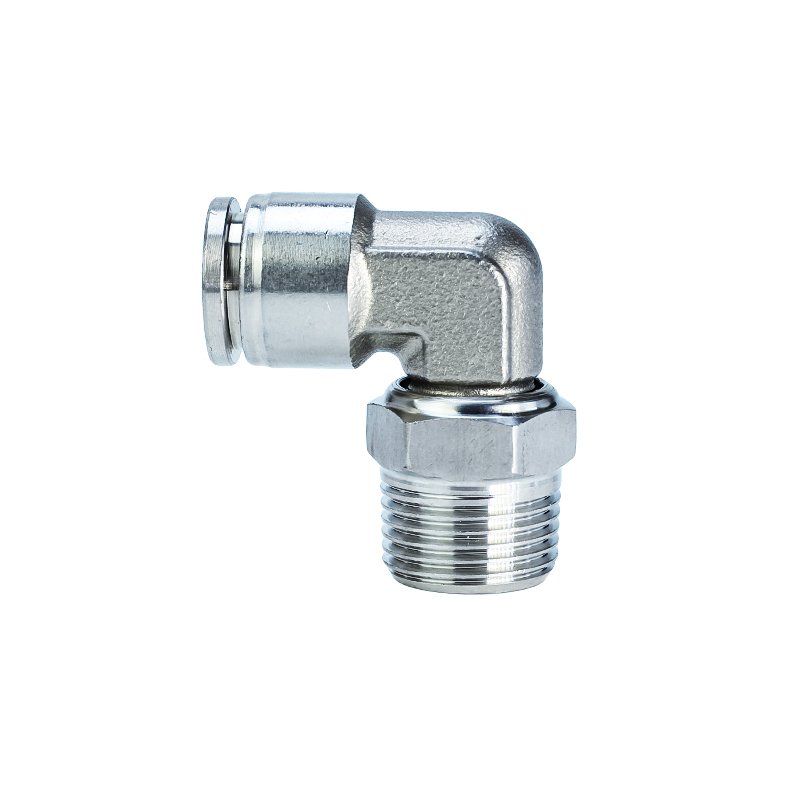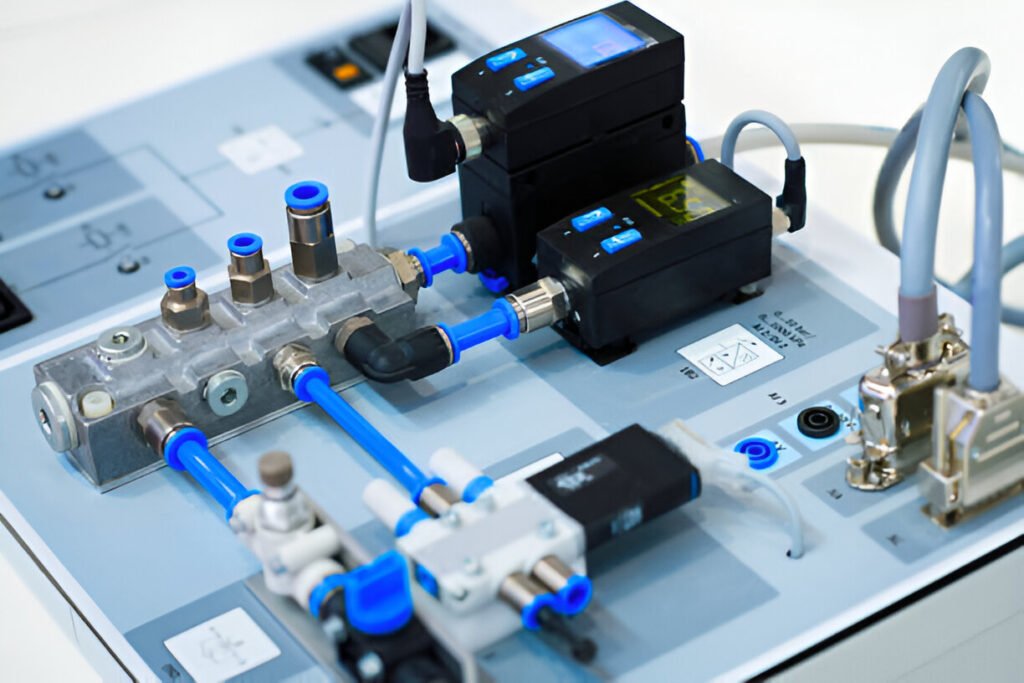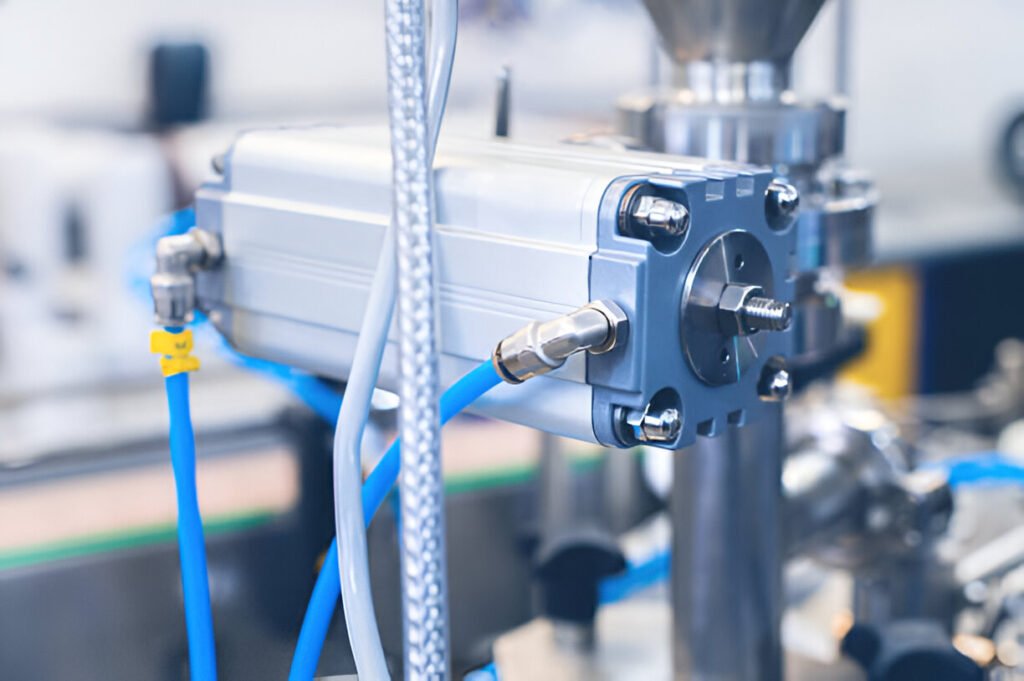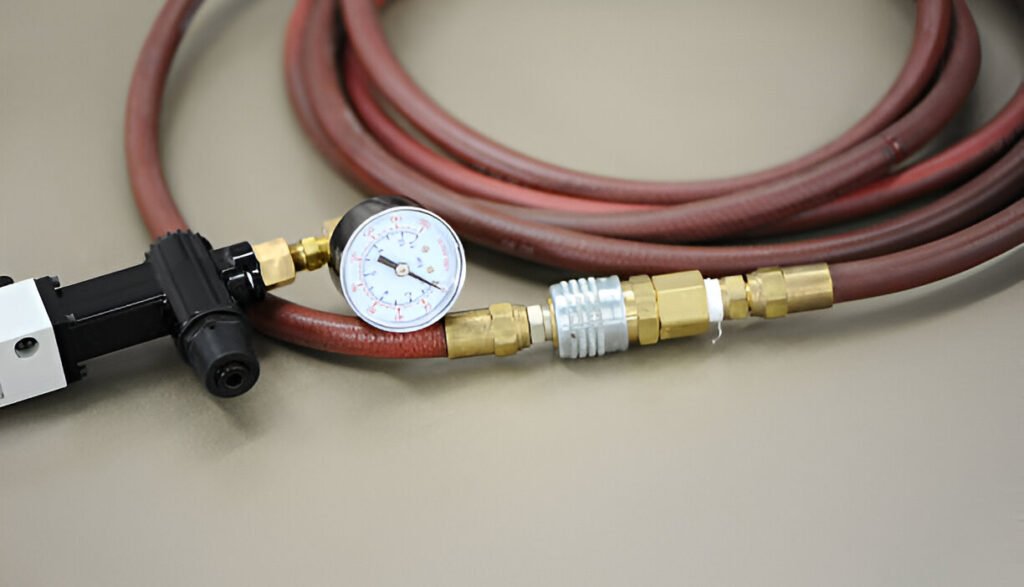A pneumatic system is a system that uses compressed air as a power source to drive mechanical equipment and tools. This system achieves control of mechanical components and power output through energy conversion of compressed air. Pneumatic technology is based on the principle of gas dynamics. Through the compression, expansion and flow of gas, it is converted into mechanical energy to drive various mechanical devices to work.
definition
The pneumatic system is mainly composed of four basic parts: air source device, pneumatic actuator, pneumatic control element and pneumatic auxiliary element. The air source device is responsible for providing compressed air; pneumatic actuators, such as cylinders and pneumatic motors, are working parts of the system and are responsible for completing direct mechanical actions; pneumatic control components, including various valves, are used to control air flow direction and pressure; pneumatic assist Components include equipment for cleaning, conditioning and lubricating compressed air.

importance
The reason why pneumatic systems are important and widely used in industry and daily life is mainly based on the following points:
- High efficiency and reliability: The pneumatic system can quickly respond to operating instructions, perform quickly, and has high reliability due to its simple design and low maintenance costs.
- Safety: Compared with electric and hydraulic systems, pneumatic systems are safer in flammable and explosive environments because the power medium they use is air, with almost no risk of fire and explosion.
- Environmentally friendly: The compressed air used in pneumatic systems is a clean, pollution-free energy source. During the working process, only air is emitted, which has minimal impact on the environment.
- Economical: Although pneumatic systems may not be as efficient as electric systems in terms of energy conversion efficiency, their cost-effectiveness in installation, operation and maintenance, especially in specific application scenarios, make them an economically viable solution.
- Flexibility and adaptability: The pneumatic system can easily adjust the output power and speed by changing the flow and pressure of compressed air to adapt to a variety of different working conditions and needs.
Popularity of pneumatic systems
Pneumatic systems are widely used in industry and daily life due to their unique advantages. Its working principle is to transfer energy through compressed air, which is simple, efficient and environmentally friendly.
The popularity of pneumatic systems is not only due to its mature technology and environmental friendliness, but also because it can provide efficient and reliable energy transmission methods. Whether it is in the production line of heavy industry or in simple applications in our daily lives, pneumatic technology has demonstrated its irreplaceable value and wide application potential. With the advancement and innovation of technology, pneumatic systems will be more widely used in future application scenarios and play a more important role in improving production efficiency and life convenience.
The following is a detailed introduction to the application of pneumatic systems in various fields.
Industrial applications
In the industrial field, pneumatic systems are used almost everywhere, especially in automated manufacturing, automobile manufacturing, packaging industry and machinery operation.
- Automated production lines: Pneumatic systems are widely used in automated production lines to control robotic arms, conveyor belts, etc. Its quick response and high reliability greatly improve production efficiency.
- Automobile manufacturing: In the automobile manufacturing process, pneumatic tools (such as stamping machines, drilling machines) are widely used due to their high efficiency and precise control, and are used in many aspects such as assembly and painting.
- Packaging industry: Pneumatic systems play an important role in packaging machinery, driving operations such as strap tightening and lid sealing to ensure that the packaging process is fast and consistent.
- Mechanical operations: Such as clamping equipment, positioning devices, etc., all rely on pneumatic systems to complete precise mechanical operations, especially in situations where speed and repeatability are required.
Daily application
Pneumatic systems also play an integral role in our daily lives.
- Transportation: In public transportation, the door control of subways and some trains is realized by using pneumatic systems to ensure that the doors can be opened and closed quickly and safely.
- Household and commercial equipment: Pneumatic technology can also be found in some household and commercial equipment, such as automatic doors, pneumatic chairs, etc. They provide convenience while ensuring safety.
- Entertainment and leisure: In some entertainment facilities in amusement parks, pneumatic systems are used to control fast movements and simulate specific scenes, providing visitors with an exciting experience.
- Tools and Equipment: Pneumatic tools, such as air nail guns and spray paint guns, are popular for renovation and repair work because they are lighter and easier to use than power tools.
Basic principles of pneumatic systems
Pneumatic technology is a technology that converts compressed air into mechanical energy. It uses compressed air as a power source to perform mechanical movements through pneumatic components such as cylinders and pneumatic motors. At the heart of this technology is the idea that air can be compressed and release energy as it expands, a process used in pneumatic systems to generate power and motion.
working principle
- Generation of compressed air: The beginning of a pneumatic system is the generation of compressed air, usually done by an air compressor. Air is drawn in by the compressor, increases its pressure by reducing its volume, and then stores it in a compressed gas container for use.
- Control and regulation: Compressed air is transported through pipelines and its flow direction and flow rate are regulated through various control elements (such as valves). These control elements control the air flow precisely as needed to drive the actuators.
- Power conversion and execution: When the compressed air reaches the actuator (such as a cylinder or a pneumatic motor), the energy of the gas is converted into mechanical energy, which drives the actuator to perform linear or rotational motion to complete specific tasks.
Properties of gases and their effects
The properties of the gas are critical to the design and performance of pneumatic systems. The main gas properties include:
- Compressibility: The volume of a gas can be reduced by an increase in external pressure. This property allows the gas to be compressed in a compressor, stored in a container, and then used in pneumatic systems.
- Swellability: When compressed air is released, it rapidly expands to its original volume or greater. This expansion property is used by pneumatic systems to perform work, such as pushing a piston in a cylinder.
- Flowability: The ability of gas to flow and be delivered to various parts of the system through pipes and control elements. This property allows flexible design and layout of pneumatic systems.
- Temperature changes: Gases experience changes in temperature during compression and expansion. The temperature increases during compression and decreases during expansion. This property needs to be considered in the design of pneumatic systems to ensure system stability and efficiency.

Main components of pneumatic system
Through precise design, the pneumatic system converts compressed air into mechanical kinetic energy to perform various complex work tasks. This transformation process relies on several key components within the system, each with its own unique functionality and role. Here’s a more detailed look at these major components:
1. Air source equipment
The core task of the air source equipment is to provide compressed air, which is the basis for the work of the pneumatic system. The most common air source device is an air compressor, which increases the pressure of air by reducing its volume. There are many types of compressors, including:
- Reciprocating compressor: Uses the reciprocating motion of a piston in a cylinder to compress air, suitable for low to medium flow requirements.
- Rotary screw compressor: uses two intermeshing screws to compress air by reducing the space between the screws, suitable for continuous operation and high flow requirements.
- Centrifugal compressor: Increases air speed through a rotating impeller and then reduces the speed through a diffuser to increase pressure, often used for extremely high flow needs.
2. Pneumatic actuator
Pneumatic actuators are components in the system that convert compressed air energy into mechanical kinetic energy. They mainly include:
- Cylinder: It is the most commonly used actuator. It uses compressed air to push the piston to move linearly in the cylinder to generate push and pull force. Cylinders can be divided into single-acting cylinders (one-way force) and double-acting cylinders (two-way force) according to different structures and functions.
- Pneumatic motor: Converts compressed air energy into rotational motion. Unlike cylinders, pneumatic motors can generate continuous rotational power and are used to drive various rotating machinery.
3. Pneumatic control components
Pneumatic control components are the brains of the system, responsible for controlling and directing the flow direction, pressure and speed of compressed air to ensure that the system operates efficiently according to established procedures. They include:
- Directional control valve: controls the flow direction of air and determines the action direction of the actuator, such as one-way valve, two-way valve and reversing valve, etc.
- Pressure control valve: used to regulate and limit the pressure in the system and protect the system from overpressure damage, including pressure reducing valves and safety valves.
- Flow control valve: Control the speed of pneumatic components by adjusting the flow rate, such as throttle valves and quick exhaust valves.
4. Pneumatic auxiliary components
Pneumatic auxiliary components provide additional functions required for system operation, such as filtration, pressure regulation, lubrication, etc., ensuring system stability and extending service life. mainly include:
- Filter: Removes solid particles, oil mist and moisture from compressed air to prevent contamination and wear.
- Pressure regulator: ensures that the pressure in the system is maintained at a constant level to adapt to different working needs.
- Lubricator: Add a small amount of lubricating oil to the compressed air to reduce wear of pneumatic components.
- Pipes and joints: constitute the physical links of the system and are responsible for delivering compressed air to various parts.
5. Control system and sensors
Modern pneumatic systems are often equipped with electronic control systems and sensors to improve accuracy, monitor status and achieve automated control. These advanced components enable more complex control logic such as timing control, pressure and position feedback, and integration with other automation systems.
Work flow of pneumatic system
The working process of the pneumatic system is a process of converting compressed air energy into mechanical action. This process includes several key steps: the generation, delivery and purification of compressed air, the control and regulation of compressed air, and the final conversion of kinetic energy. The following uses the working process of a pneumatic clamp as an example to explain this process in detail.
- The air source device (usually an air compressor) sucks in air from the environment and compresses it into high-pressure air through physical compression. During this process, the volume of air decreases and the pressure increases.
- The compressed air is transported to the system through pipelines. During the transportation process, impurities, moisture and oil mist are removed through filters to ensure the cleanliness of the air, and then the pressure regulator is adjusted to the appropriate working pressure.
- The compressed air passes through control components (such as directional control valves) to adjust the air flow direction and flow rate according to system requirements. When needed, the lubricator will also add a small amount of lubricating oil to the air to reduce wear on the actuators.
- The adjusted compressed air enters the pneumatic actuator (such as a cylinder). In the case of pneumatic clamps, compressed air pushes the piston in the cylinder to move, generating linear power. Through transmission devices such as mechanical connecting rods, this power is eventually converted into the clamping or releasing action of the clamp.
Application of pneumatic systems
Pneumatic systems find widespread use in many industrial and technical fields due to their unique characteristics such as fast response, high efficiency, simple maintenance, and safety. The following are some typical pneumatic system application cases, showing how this technology can improve work efficiency and safety in different scenarios.
Automated production line
In automated production lines, pneumatic systems are used for a variety of fast, repetitive operations such as material handling, assembly, sorting and packaging. For example, pneumatic grippers and pushers are widely used to fix and move parts, and air motors and cylinders are used to drive conveyor belts and rotating devices. These applications take advantage of the fast response and high repeatability of pneumatic systems, significantly improving production efficiency and reliability, while significantly reducing maintenance costs because of the simplicity of pneumatic systems.
Robot technology
In the field of robotics, pneumatic systems are used to drive robot joints and actuators, providing flexible operation and force control. This application takes full advantage of the lightweight and powerful properties of pneumatic systems, allowing robots to perform precise handling, assembly and operation tasks. In addition, compared with electric drive, pneumatically driven robots are safer in operation, especially in human-machine collaboration scenarios, reducing safety hazards at work.
Packaging and printing industry
In the packaging and printing industry, pneumatic systems are used to quickly control the paper handling, cutting and folding processes of printing machinery, as well as packaging, labeling and sealing operations on packaging lines. The application of pneumatic technology improves the processing speed and operation accuracy, while also reducing the mechanical failure rate and ensuring the continuous operation of the production line and the consistency of product quality.
Environmental control and HVAC systems
In environmental control and heating, ventilation and air conditioning (HVAC) systems, pneumatic technology is used to adjust the opening and closing of valves and dampers to achieve precise air flow and temperature control. These applications take advantage of the high reliability and simple maintenance characteristics of pneumatic systems, ensuring air quality and a comfortable indoor environment while also improving energy efficiency.
Medical equipment
Pneumatic technology also plays an important role in medical equipment. For example, in ventilators and other assisted breathing equipment, pneumatic systems are used to precisely control airflow and pressure to meet the different breathing needs of patients. The safety and reliability of these devices are critical to patients, and pneumatic systems are widely adopted because of their simplicity and effectiveness.
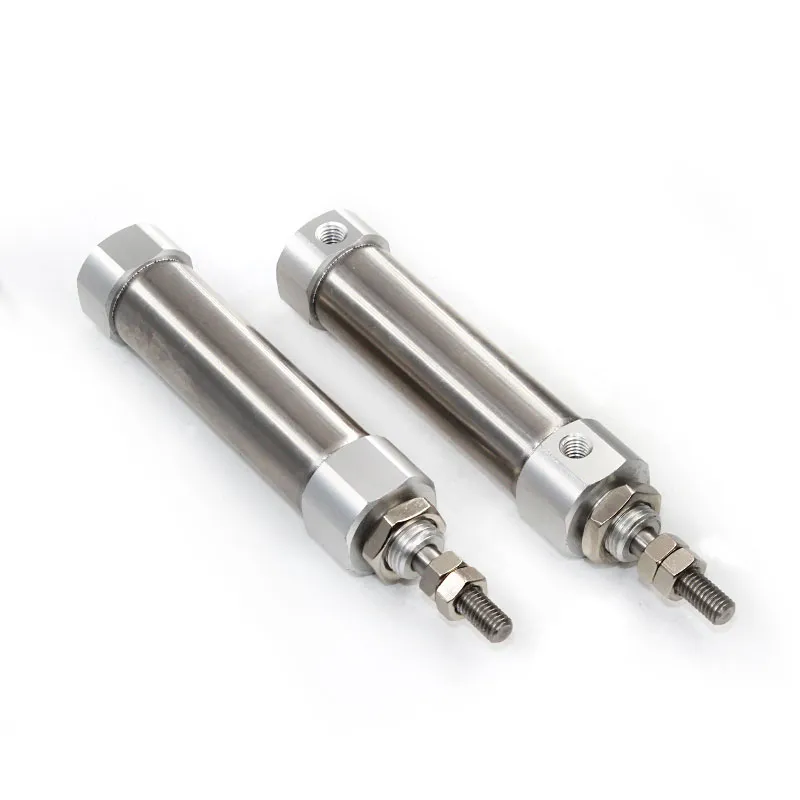
Advantages of pneumatic systems
Pneumatic systems have unparalleled advantages in improving efficiency and safety in industrial and technical applications. These advantages arise from the unique properties and operating characteristics of pneumatic technology and are explored in detail below:
Improve efficiency
- Fast response: Pneumatic systems can respond to control signals within milliseconds to achieve fast start, stop and reverse, which is crucial for increasing the working speed of production lines and automated equipment.
- High repeatability: During the continuous production process, the pneumatic system can maintain very high operating consistency and repeatability, ensuring the uniformity of product quality.
- Easy to control and adjust: The speed and power of the pneumatic system can be achieved by simply adjusting the control valve, making the system adjustment very flexible and convenient to meet different production needs.
- Energy saving: The pneumatic system consumes almost no energy when shut down, and through optimized design and operation, energy consumption can be reduced, especially in applications that require frequent starts and stops.
- Simple maintenance and low operating costs: Due to the simple structure and strong durability of pneumatic components, system maintenance is relatively simple, reducing downtime and maintenance costs, thus improving overall production efficiency.
Improve security
- Non-flammable and explosion safe: The pneumatic system uses non-flammable media such as air, which avoids potential safety hazards when used in flammable and explosive environments and provides a safe and reliable power solution.
- Overload protection: When the load is too large, the pneumatic system can automatically reduce the pressure by releasing compressed air, thereby preventing mechanical damage and personal injury, which is difficult to match with electric systems.
- Low Temperature Operation: Compared to electric and hydraulic systems, pneumatic systems generate lower temperatures during operation, reducing the risk of burns caused by high temperatures.
- Low risk of leakage: Even if the pneumatic system leaks, the leakage is air, and the harm to personnel and the environment is far less than the leakage of other media such as hydraulic oil.
- Suitable for harsh environments: Due to its stability and durability, the pneumatic system can still maintain normal operation in harsh environments (such as high humidity and dusty environments), ensuring operational safety.
Flexibility and adaptability
- Flexible system configuration: The design of the pneumatic system allows users to quickly adjust and expand based on specific application needs. This is especially important for responding to changes in production needs or optimizing workflows. For example, if a manufacturing process requires the addition of an assembly station, the relevant pneumatic components (e.g., cylinders, valves, etc.) can be easily added to the existing system without extensive refactoring. Similarly, for product line adjustments, simply replacing or reconfiguring relevant pneumatic components can quickly adapt to new production needs.
- Adjustable force and speed: Another significant advantage of pneumatic systems is the ability to precisely control operating force and speed. By adjusting the air supply pressure and flow, it can achieve from extremely light touch to powerful thrust to meet different working conditions and requirements. This adjustment can be achieved through simple pressure regulating valves and flow control valves installed in the system, allowing the pneumatic system to maintain high accuracy while also adapting to changing operating needs.
Easy to integrate and automate
- Integration with other systems: The integration of pneumatic systems with electrical control technology and computer systems provides powerful support for automation. Pneumatic components can be controlled by electrical systems through solenoid valves, and these control signals can be sent by program logic controllers (PLC) or computer control systems. This integration enables pneumatic systems to perform complex sequences of operations, react to external sensor inputs, and adjust their behavior in real time to changes in the production process.
- Automation and intelligent control: Through integration with computer control systems, pneumatic systems can not only automatically perform predetermined tasks, but also utilize machine learning and artificial intelligence algorithms to optimize their performance and response. This intelligent control can make decisions based on real-time data analysis, such as automatically adjusting pressure and flow to adapt to different operating conditions, or predicting maintenance needs to avoid unplanned downtime.
Limitations of pneumatic systems
Although pneumatic systems are widely used in a variety of applications due to their high efficiency, safety, and reliability, they also have some limitations. Understanding these limitations is critical to selecting the right systems and technologies for a specific application. The following is a detailed discussion of the main limitations of pneumatic systems:
energy efficiency
- Low energy efficiency: Pneumatic systems have lower energy conversion efficiency than electric and some hydraulic systems. Some losses of energy during air compression, as well as possible leaks in the system, result in lower overall energy efficiency. This means that, despite their relatively low operating costs, pneumatic systems may not be the most economical option in terms of energy consumption.
control precision
- Accuracy Limitations: While pneumatic systems are suitable for many industrial applications, their control accuracy and positioning accuracy may not be as good as electric systems. Particularly in applications that require extremely high precision positioning, the compressibility of the gas can be a limiting factor.
Power output
- Limited force range: Pneumatic systems perform well within certain force and speed application ranges, but they provide limited maximum force and speed and may not be suitable for all types of industrial applications.
environmental impact
- Noise pollution: Pneumatic equipment may produce high noise levels when operating, which may have an impact on the work environment and the hearing health of the operator. While steps can be taken to reduce noise, this can add complexity and cost to the system.
- Air quality management: Pneumatic systems require high-quality compressed air to avoid damage to internal components. This means investing in air purification and drying equipment is necessary to maintain operational reliability and longevity of the system.
system maintenance
- Leak issues: Leakage in pneumatic systems is a common problem that not only reduces the energy efficiency of the system, but can also cause performance degradation. Regular inspection and maintenance are required to ensure efficient operation of the system.
Application scope
- Environmental restrictions: Although pneumatic systems are suitable for harsh environments, in some specific environments, such as high temperatures or places with corrosive substances, pneumatic components may require special materials or additional protection, increasing costs.
FAQ
Q: What is the difference between pneumatic system and hydraulic system?
A: Pneumatic systems use compressed air as a power source, while hydraulic systems use liquids (such as oil) to transfer energy. Pneumatic systems are generally used for lighter loads and high-speed applications, while hydraulic systems are suitable for heavy loads and applications requiring greater force. Pneumatic system equipment is generally lighter and less expensive, but less energy efficient; hydraulic systems provide greater force and more precise control, but have higher cost and maintenance requirements.
Q: What are the main application areas of pneumatic systems?
A: Pneumatic systems are widely used in automated production lines, mechanical operations, packaging, printing, robotics, medical equipment and other fields. They are particularly suitable for applications requiring fast, repetitive motion and a safe operating environment.
Q: Why does the pneumatic system make noise?
A: The noise of the pneumatic system mainly comes from two aspects: one is the flow noise generated when the compressed air passes through valves and pipes; the other is the mechanical noise generated when the pneumatic actuators are working (such as the movement of the cylinder piston). In addition, high-speed airflow without noise control during exhaust will also produce greater noise.
Q: How to improve the energy efficiency of pneumatic systems?
A: Improving the energy efficiency of pneumatic systems can be achieved through several methods: optimizing system design to reduce unnecessary pressure loss; regularly inspecting and maintaining the system to repair leaks in a timely manner; using more energy-efficient compressors and components; and rationally adjusting system pressure , avoid overuse.
Q: How to maintain the pneumatic system?
A: Maintenance of pneumatic systems includes regular inspection of air source equipment (such as compressors), pipelines, valves and actuators to ensure there are no leaks and wear; replacing or cleaning filters to ensure air quality; checking and adjusting pressure and flow control devices , to ensure that the system is running at its best. Regular system maintenance helps extend equipment life and improve system efficiency and reliability.
Q: How to choose the appropriate pneumatic system?
A: Selecting the appropriate pneumatic system requires consideration of the following factors: the specific needs of the application (such as force, speed, and accuracy); the operating environment (such as temperature, humidity, and presence of corrosive substances); and the overall cost (including initial investment, operation, and maintenance costs). Understanding application requirements and environmental conditions helps select the most appropriate system configuration and components.
Q: How to achieve precise control of pneumatic systems?
A: Pneumatic systems can achieve precise control by installing precise flow control valves, using proportional valves, and integrating electrical control technology (such as PLC and electronic control units). These methods can accurately adjust the flow and pressure of compressed air, thereby achieving precise control of the actuator action.
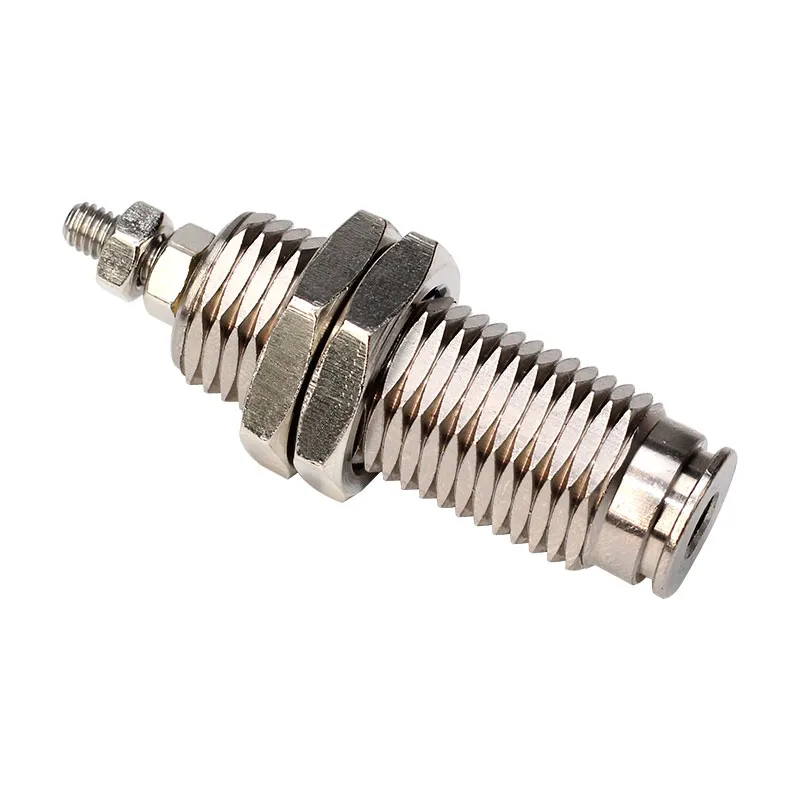
Summarize
Pneumatic systems play an important role in many fields with their unique advantages, especially in automated production, robotics, packaging, printing and medical equipment. These systems utilize compressed air as a power source, converting the energy of the compressed air into mechanical power through a series of carefully designed components such as cylinders, valves and pipes. Its fast response, high repeatability, high safety, and simple maintenance make the pneumatic system an ideal choice for improving production efficiency and ensuring operational safety.
However, pneumatic systems also have some limitations, including low energy efficiency, limited control accuracy, limited application range of force and speed, noise issues and sensitivity to environmental conditions. Understanding these limitations is critical to selecting and designing a pneumatic system suitable for a specific application.
Despite the limitations, through optimization of system design, standardization of maintenance, and integration with electrical control systems, the performance and energy efficiency of pneumatic systems can be significantly improved and their applications in modern industry can be expanded. The flexibility and adaptability of pneumatic technology, coupled with continuous technological progress and innovation, indicate that pneumatic systems will continue to play an important role in the fields of automation and intelligent manufacturing. Proper assessment of application needs, environmental conditions and system design is critical to realizing the maximum potential of pneumatic systems, helping companies to achieve success in increasing productivity, reducing costs and improving product quality.

